Ever since I met TACCIA Founder Shu-Jen Lin at the Baltimore/Washington International Pen Show in March, I've been excited about TACCIA and wanted to write about it. TACCIA (pronounced "Ta-ssha") is a smaller Japanese-American brand that you may not be familiar with, but they make beautiful inks, lovely pen wraps featuring traditional kimono designs, and very high quality unique fountain pens that use Sailor nibs. I stayed in touch with Shu-Jen after the show, and she graciously agreed to an interview over Zoom, so I was able to ask her some of the questions I've been wondering about the brand and her role in it. We spoke for about an hour and a half, and she was very passionate about sharing some of TACCIA's most beautiful limited edition maki-e designs. I learned about the story behind TACCIA, and she even answered some of my fun questions about her favorite inks and about the very accessible Spectrum fountain pen, which I own and love.
Meeting Shu-Jen

As I mentioned in my article about the pen show, I first met Shu-Jen Lin when I arrived at the show and was greeted by one of our store regulars, Liz, who excitedly told me about the limited edition TACCIA pen she had fallen in love with and was about to break down and buy. Of course I wanted to see it, so she took me straight to the TACCIA table for a look. I was dazzled by the array of beautiful pens Shu-Jen had on display, and made my way back to TACCIA later in the day when I had more time to linger at the table and try some of the pens myself. Shu-Jen was very friendly and eager to show me her gorgeous pens. She even let me write with the different nibs available on TACCIA's high-end pens, which I had never tried because we don't dip test the limited edition pens in our store.

I was extremely impressed by how smooth and wet they were, and especially loved the ink in the medium fine pen, which turned out to be Akasakura.

Shu-Jen asked me to come back later to talk more, and also invited me to a TACCIA 20th Anniversary Get Together after-hours event, where she raffled some amazing prizes including a Summer Shimmer Miyabi Kaga limited edition fountain pen with a Sailor 18K gold nib worth about $1,270. Before the raffle, she told us a little about TACCIA's history and future, her concept of modern maki-e and high quality standards, her love of beautiful raden abalone, and her goal to make new designs for women's smaller hands. I was fascinated and wanted to know more!
I didn't win anything at the TACCIA event, but I didn't need to because Shu-Jen had already given me a TACCIA Spectrum fountain pen as a gift that she said she wanted me to use and enjoy. She asked me to choose my favorite color and nib size, and I picked forest green with an EF nib. I don't usually go for extra fine nibs on Japanese pens, but was shocked when I tried it and saw how smooth it was. I could feel the pen's quality as soon as I picked it up, the teal color was beautiful, and the two-tone nib felt so incredible, it was hard to believe it was steel. That evening in my hotel room when I should have been resting after dinner, I inked the pen with the bottle of Sailor ink that I'd won in the Pen Shows After Dark raffle. It was a perfect combination, and I started using it right away. I've been using the pen regularly for the past three months and it has become one of my top go-to pens. I'll talk about it more later in this article! (I made a fun Instagram video of inking and using the pen for the first time. It's one of my favorite videos!)

Shu-Jen's TACCIA Story
These days, Shu-Jen is mainly taking care of TACCIA's sales and marketing, but she founded the company back in 2003 in Orange County, California. She is also in charge of TACCIA's pen designs, and since 2017 has been spending more and more time on TACCIA's high-end urushi/maki-e designs. (Urushi is a type of natural lacquer processed from the sap of the Japanese urushi tree, Rhus verniciflua, and maki-e refers to decoration techniques used in conjunction with this lacquer.) I find it very exciting to discover a fountain pen company that was started by a woman and continues to be guided by her 20 years later!
In case you were wondering: "taccia" is a Japanese word, and Shu-Jen told me that it means "master, skillful" and "in good health." They started to use “Taccia" in the beginning, but changed the logo to “TACCIA" after 2011. The all-capitals spelling is just a design decision; the word is not an acronym.
Shu-Jen told me that she believes pens are the perfect accessories and that it's fun to collect them. Her joy and passion comes through strongly in her aesthetic choices and in the subjects she chooses for her pens and inks. She has a fashion design background, and tried right from the start to use different materials to make pens. Between 2003 and 2011, she introduced the TACCIA Mother of Pearl collection, which was very successful for her. She used a geometric design concept to create TACCIA's Mother of Pearl collection in four different designs for customers to choose. In addition, she made over-sized pens, and used bright colors of modern acrylic to create the 2nd design, which she called TACCIA Doric pens.
American customers responded well to her design concept for these pens, and, in April, 2011, TACCIA was acquired by ITOYA of America. Starting in 2013, TACCIA upgraded all their nibs to Sailor stainless steel and Sailor 14 karat gold. In 2015, TACCIA introduced their first urushi/maki-e pen, five designs of the TACCIA Reserve Raden limited edition. They were limited to 50 pens in each design. These pens were very well received, and, in 2017, TACCIA won the Pen World 2016 Readers' Choice Award for the Best Urushi Arts. The Pen World Awards are like the Oscars and Grammys of the pen industry, and indicate the annual high points that pen artists strive to compete with and pen connoisseurs most desire to collect. What an achievement!

I personally love TACCIA's Reserve Raden line. They are smaller pens, and I think that they have a feminine feel. I recommended two pens from this line to one of my favorite customers, Toni, who bought "Autumn's Leaves" the first time we met, then recently bought the last remaining "Autumn's Rustle." I miss this lovely pen, but I'm glad it's now side by side with its sister in Toni's pen box.
Shu-Jen told me in our Zoom interview that these pens have been sold out at TACCIA for a while now, as they were launched in 2016, but she is always offering new creative designs using sparkling particles of abalone shell, also known as nacre or mother-of-pearl. The gorgeous layers of the abalone shell shimmer with iridescent colors, and a single piece may have red, orange, yellow, green, blue, and purple intermingling and shifting as you move it in the light. Its beauty is impossible to fully capture in a photo, and is breathtaking when used creatively by an artist like the ones who create TACCIA's pens! I took a few photos of the "Autumn's Rustle" pen in my garden shortly before I sold it. So lovely!


(If you are interested in limited edition pens that we don't have in stock, you can special order them through our store at any time, as long as TACCIA still has them available.)
Shu-Jen continued her story: in April, 2018, "we sold TACCIA brand to Nakabayashi in Japan. I continue to work for TACCIA as national account manager and I’m also in charge of TACCIA product development. I started going to Japan two times per year to learn more about the urushi and maki-e." Shu-Jen grew up in Taiwan, but she lived in Japan some time ago and travels to Japan regularly now. She works closely with TACCIA's Japanese artists to create new urushi/maki-e pens.
TACCIA took a big step in 2020 when Sailor finally agreed to custom make the TACCIA King of Pens nib in 18 karat gold. Shu-Jen confided that it's a big investment, but it is worth it, as TACCIA entered a new chapter with this move. She is confident that TACCIA can compete with other major Japanese urushi/ maki-e pen makers, such as Namiki/Pilot, Sailor, Platinum and Nakaya. Go, Shu-Jen!
Sailor Nibs, Raden, Rankaku, and Feminine Vision
Shu-Jen told me that TACCIA nibs are all made by Sailor now and customers appreciate Sailor's high quality writing performance. She has seen many happy customers who used to buy TACCIA's mid-level pens like the Pinnacle, Spectrum and Spotlight come back to buy the TACCIA urushi/maki-e pens. This excites me, too. I am not ready to purchase a high-end urushi/maki-e pen yet, but the Spectrum was an excellent introduction to TACCIA for me and I feel great loyalty to and love for the brand because I love my Spectrum pen. I want to see where Shu-Jen's ideas and ambitions will take her, and what beautiful new designs she will come up with next.
I asked Shu-Jen what TACCIA products she is most proud of or excited about, and she replied, "I’m very excited about the two new maki-e pens which are TACCIA 20th anniversary special theme pens." These are the Whispering Pond and Honey Bee maki-e pens that she officially launched at the recent Chicago Pen Show. She added, "I went to Japan two times to meet our urushi/maki-e artist for modification and I’m very pleased that both pens turn out very nice."
 (Honey Bee was one of the gorgeous pens I previewed at the Baltimore/Washington Pen Show.)
(Honey Bee was one of the gorgeous pens I previewed at the Baltimore/Washington Pen Show.)
The first thing she wanted to show me during our Zoom call were these two very special 20th Anniversary pens, limited to 20 pieces. I know my screenshots are super grainy, but if you use your imagination you can probably hear me saying, "Ooooo... beautiful!" as I stared at the Honey Bee pen she held up to her computer's camera, and gasping, "Gorgeous! I love that color! It's so pretty!" as she showed me Whispering Pond, which features delicate lotus flowers and breathtaking mauvey-lilac raden. 

She told me she had already pre-sold four of each of them, but still had some stock left out of the twenty pens made. The Whispering Pond pen design took two years to complete, and the Honey Bee nearly as long. She spent months in Japan working closely with the artists to get the design concepts exactly as she wanted them.
I also asked Shu-Jen about the smaller pen designed for women's hands that she had mentioned at the Baltimore/Washington Pen Show, and she told me, "We are working on a new pen shape that is smaller than the Miyabi line. We expect the new model will be available for sales in February, 2024." I can't wait to see this model, and I hope we will be carrying it at Pen Boutique! I often feel that many of the most beautiful limited edition pens, while incredible works of art, are too unwieldy for me, a woman with smaller hands, to actually use. I know several collectors who would definitely appreciate a more delicate-sized pen to match the delicacy of the exquisite details.
When I asked Shu-Jen to describe the difference between the two larger sized limited edition maki-e TACCIA pen lines we carry, the regular Miyabi and the Miyabi Empress, she kindly sent me the comparisons below. The Empress is the larger of the two--a feminine counterpart to Namiki's Emperor, but only slightly bigger than a Sailor King of Pen--and features a King of Pen size nib. Shu-Jen compares the Miyabi line to Sailor's 1911 standard size. They both have incredible craftsmanship and detailing.
| Comparison | MIYABI EMPRESS FUJIYAMA LE | MIYABI FUJIYAMA LE |
| Pen Length | 159 mm | 155 mm |
| Cap Diameter | 18.70 mm | 17.70 mm |
| Barrel Diameter | 17.30 mm | 16.20 mm |
| Gross Weight | 41.60 grams | 31.00 grams |
| Nib Type | King of Pen 18 kt gold nib, Med & Broad | Regular 18kt gold nib-EF, M/F, Med, Broad |
| Clip Finish | Maki-e on clip | Maki-e on clip |
| MSRP | MSRP- $3,395 | MSRP-$2,495 |
| Limited | Limited 88 pens worldwide | Limited 100 pens worldwide |
My favorite TACCIA pen in our limited edition case right now is the magnificent Miyabi Empress Winter's Breath, which is stunning when the sunlight creeps through the blinds in the front of our store late in the afternoon and illuminates the colorful raden abalone shell inlays and bright white rankaku eggshell inlays. This pen is also available in the smaller Miyabi size with Sailor's non-King of Pen 18 K gold nib, in extra fine, medium fine, medium, and broad, and, if you are interested we can special order it from TACCIA. Shu-Jen has just a few left.
Pen Boutique owner Leena has a Miyabi Empress Winter's Breath in her own personal collection, and she let me borrow hers to bring home and try. Wow! Using such a beautiful pen definitely elevates the writing experience. I could get used to this...

When I look at this pen in our store, the iridescent nacreous shell inlays always catch my attention, of course, but up close at home, I realized that the bright white rankaku eggshell inlays are equally beautiful. I love the fascinating irregular shapes of the pieces of shell laid out to form flowing mosaic patterns. It's like an incredibly detailed puzzle designed as a collaboration between artist and nature.

Another extremely special pen we carry in the store is the Miyabi Empress Chinkin Tiger. To create a maki-e chinkin pen, ebonite is covered with many layers of urushi lacquer and expertly etched by the artist. The etching is then filled with gold leaf to complete the chinkin (gold inlay) part of the process. TACCIA's Empress pens all feature their exceptional 18K gold "King of Pen" nib made in Japan exclusively for TACCIA, and this pen is limited to 36 worldwide. TACCIA describes it as "masterfully carved to accentuate the power exuding from the Soaring Tiger while highlighting the three-dimensional beauty and intricacies of the Chinkin technique."

It is indeed a powerful image, and it wraps around the pen in an exciting and dynamic way that is very difficult to capture adequately in a photo. I also love the delicate details on this pen's cap. Shu-Jen told me that the artist, Maeda Yasutaka, was at her table at the DC Pen Show last year doing an on-site demonstration, and that he is very honorable and is one of the best chinkin artists in Japan.

Shu-Jen also shared that she hasn't adjusted the prices for these pens for two years, even though her cost to make them has increased by 10%. She said, "I appreciate customer's continued support... so take advantage of the two year old prices!"
Shu-Jen told me that the Empress Chinkin Tiger has been nominated for this year's Pen World Readers' Choice Award in the category of Best Urushi Arts Pen, and the other spectacular TACCIA Miyabi Empress Fountain Pen that we carry, Fossils In The Sky - Sunset Peacock, has been nominated for both Best Fine Art Pen and Pen of the Year!
When Shu-Jen showed me Sunset Peacock on our Zoom call, I immediately smiled in recognition. "We have that pen at Pen Boutique, yes!"



In addition, TACCIA's wonderful new mini ink sets, TACCIA Sunao-iro Mini, have been nominated for Ink of the Year! Wow! Shu-Jen is very honored to be nominated in these prestigious categories and asked me to be sure to let my readers know. Keep your eyes out to see if she wins!

Pure and Honest Inks
I have been dying to try TACCIA's beautiful new Ink of the Year nominated Sunao-Iro Mini sets, so I decided to check them out for this article. First I asked Shu-Jen a little about her two separate lines of ink: the standard inks that are available both as separate bottles and in the three mini-ink sets, and the more expensive Ukiyo-e line that comes in beautiful packaging illustrated with famous Japanese art. She told me that all the inks are the same quality, but, with the Ukiyo-e inks, "you can see in between the shade. It's a dusty tone... there's a lot of detail in there." "So, the colors are more subtle, is that what you are saying?" "Right."
The standard inks come in thirteen "universal color tones" with distinct and unique characteristics perfect for those who appreciate the finest details in their writing and artistic expression. The three Sunao-Iro Mini sets each include three colors from this collection: 1) Atmospheric Austerely Elegant with Tsuchi (Golden Wheat), Ebi (Purple Red), and Uguisu (Olive Green), 2) Basic Blue, with Auguro (Blue-Black), Ao (Blue), and Sora (Sky Blue), and, 3) Sweet Color Tone, with DaiDai (Orange), Momo (Pink), and Murasaki (Purple). The sets are presented in very cleverly and elegantly designed sturdy cases that hold and protect each 20 ml bottle. Hinged folding lids wrap around the top and front, and seal shut magnetically. It's very nice packaging that makes it easy to both store the inks and carry them with you. These sets are extremely attractively priced, too. I also love that the outer wrap states, "Born in California. Made in Japan."
Shu-Jen sent me a flyer about the original line of inks with a quote I absolutely love:
I remember the feeling of a new set of Crayola crayons. It was thrilling, expansive, a little frightening. What could I do with these colors? Where could they take me? What if I broke one? Don't be afraid, open the box and try.
I decided to paint with the nine ink colors, and they do give you a wonderful, pure feeling of clarity and joy!

I adore these bold, saturated shades. They are easy to write with, and pop off the page, without looking too childlike or too bright. In fact, one of my favorites is Momo, a pink that is easy to see even in my extra-fine pen, but doesn't look like a little girl's pink, either. Momo has a bit of orange-yellow sheen, a beautiful combination. All the colors except Sora and DaiDai have a little sheen, but it complements the main color rather than overpowering it. Note: Sora, the Sky Blue, is much more beautiful in real life. It's one of those colors that can't be accurately photographed digitally. It's actually an intense pure azure blue, along the lines of Waterman Inspired Blue and Iroshizuku Ama-Iro.
I asked Shu-Jen if she personally has a favorite TACCIA ink, and she immediately mentioned Sabimidori, then also named Ebi and Aoguro from the original line, and Benizakura, Umemurasaki, Kurocha, and Benitsuchi from the Ukiyo-e inks.
She told me she likes the whole Ukiyo-e line, but that Sabimidori is a standout. She described it as "kind of a blue-green" and said it always gets back-ordered because there is such high demand that the Japanese factory cannot make it fast enough to take care of the worldwide orders. Sabimidori means "rusty green," and this ink has a fascinating copper sheen in concentration. Sabimidori looks bright blue when wet, but dries to a dusky petrol that writes beautifully and looks perfect in my green TACCIA Spectrum. There's a very interesting and well-written review of Sabimidori on the Inkxplorations blog.
I decided to try some of Shu-Jen's favorite Ukiyo-e inks, plus Akasakura, since I had liked it so much at the pen show, and Usuzumi, because it's a complex and well-behaved near-black that I had read a great review of on the Fountain Pen Network. I used a J. Herbin glass dip pen to write the ink names.

The Ukiyo-e series comes in 40 ml bottles inside beautiful boxes covered with images from artists who were masters of Ukiyo-e, a traditional Japanese style of painting established in the Edo-period (17th century). This art featured the lifestyle, trends, and play of the people of the time. The term ukiyo-e (浮世絵) translates as "picture[s] of the floating world." TACCIA describes the colors used for Ukiyo-e as "too delicate to be expressed in a single word," and their Ukiyo-e inks endeavor to reproduce these elusive colors.
The first Ukiyo-e inks released were the Hokusai and Sharaku collections, and the next were the Hiroshige and Utamaro. Each collection is inspired by a different famous Ukiyo-e artist, and each contains four different colors.
Shu-Jen sent me some fascinating brochures which briefly sum up each artist's style:
- Hokusai drew 36 kinds of landscape paintings with Mt. Fuji included as a part of the scenery.
- Sharaku's Ukiyo-e depicted exaggerated facial caricature for popular Kabuki actors.
- Hiroshige painted many works of art in the motif of flowers, birds, vegetation, and insects. His art has been highly appreciated by Europe and America, not only for the bold composition of the art but also the blue color, especially the beauty of indigo. Accordingly, the inks inspired by Hiroshige are shades of blue.
- Utamaro specialized in the art of "beautiful women," featuring delicate and elegant lines, pursuing the beauty of various forms and expressions.
All the inks are made of safe raw materials and all colors were supervised by the color consultant in Japan. These ink collections were produced by stationery sommelier Hiroshi Ishizu, supervised by color consultant Hanae Matsumoto, and manufactured by Nakabayashi.
Shu-Jen told me that the inks were specifically color matched to the original paintings by artists, and I got very excited hearing this. So cool! I was much more interested in talking about TACCIA's inks that Shu-Jen was, because, as she explained, "Honestly, I don't spend a lot of time to promote TACCIA inks because... we don't really make money on them." I understood, but replied, "But TACCIA ink is great because people who can't afford the pens can buy the ink and love it. You know, not everyone can afford a high-end pen." Shu-Jen agreed that this was a valid point.
She is thinking of pursuing a new line of TACCIA ink, which she may add in the third quarter. This would be a collaboration with the gentleman who does Sailor's 50 States ink. Sounds inspiring!
Spectrum Fountain Pen - Brilliant Colors, Smooth Feeling, and Quality Design
Shu-Jen is definitely most passionate about her high-end pen designs, but, as we neared the end of our discussion, I steered her back to the subject of mid-level pens like my favorite, the Spectrum, which she described as "modern acrylic, very attractive, very colorful."

TACCIA's website says of the Spectrum,
I love this idea! It's such a delightful way to describe the Spectrum, a brilliant demonstrator that seems to glow with an intense concentration of pure color. I am not normally a big fan of demonstrator pens, but the Spectrum's translucency is subtle and allows a glimpse of the pen's internal workings without being distracting. I like that the ink I choose to put in my Spectrum doesn't really change the color of the barrel, but that the acrylic is luminous and alive with color.

Shu-Jen told me that "Japanese are very conservative, and they look at the most traditional colors, so you can see the red, and the blue, and green in the color choices for the Spectrum. They used very high quality acrylic resin material for these pens, and they are hand-turned, not injection molded. When you use the pens you can see they are airtight and all the details are very well-made, but unless you touch it and use it, then pen does not stand out and say, 'Hey, this is a great pen, you should buy it!'"

I agreed, "When you first glance at it, you think, 'Oh, it's inexpensive,' but, when you pick it up and feel the quality, it's like, 'WOW!'" Shu-Jen told me that the Sailor nib, even the stainless steel one, is very expensive, so her cost for producing the pens is much higher than if she were using a German nib like most brands do. The nibs they use are at least five times more expensive than German nibs, but, she says, you can see the difference when you try an extra fine or a fine nib and see how incredibly smooth the pen is. Yes, I agreed, "It amazed me." When you think about the difference in nib price, it is quite remarkable that these pens cost quite a bit less than a similar-quality pen like Esterbrook's Estie, which uses German stainless steel nibs.

Like the Estie, the Spectrum has a springy-feeling cushion cap closure that keeps it from drying out, and the nib is always ready to write. I have filled mine four times so far--first with Sailor ink, then with TACCIA Momo and TACCIA Sabimidori, and it has written perfectly every time I've uncapped it.

Because it was so costly for her to make the mid-level pens, Shu-Jen decided to focus more on the high-end pens, but I'm glad she still offers pens like the Spectrum so customers who don't have the money to spend on a luxury pen can still enjoy TACCIA's quality. She told me about customers who come to her table at pen shows and say about the Spectrum and the Pinnacle, "'I have your pen! I like it very much! It's one of the best pens, I use every day!' And they share with it their friends" to spread the TACCIA love.
The Spectrum is available in Ocean Blue, Forest Green, and Merlot Red, in a choice of stainless steel or 14K gold nib, and comes equipped with a high-quality Sailor-compatible converter and an ink cartridge.

The nibs are available in all of Sailor's nib sizes: Extra Fine, Fine, Medium Fine, Medium, Broad, Zoom, and Music. I brought home a variety to try, from Zoom to EF, in both steel and gold.



The Zoom nib was extremely fun to play around with, and the Ao ink is a perfect pairing for the blue Spectrum pen. Ao shows a lot of sheen with this nib on Tomoe River paper!
 Momo was just a pure delight in my green extra-fine Spectrum.
Momo was just a pure delight in my green extra-fine Spectrum.
 When I compared the extra-fine 14k gold nib and steel nib, both with Sabimidori ink, they were both extremely smooth, but the gold version was slightly less wet and wrote with a finer line. I liked every nib I tried... choosing a favorite is really a matter of personal preference.
When I compared the extra-fine 14k gold nib and steel nib, both with Sabimidori ink, they were both extremely smooth, but the gold version was slightly less wet and wrote with a finer line. I liked every nib I tried... choosing a favorite is really a matter of personal preference.
I asked Shu-Jen if TACCIA nibs write exactly like Sailor nibs, or is it a different nib made by Sailor for TACCIA. She responded, "That's a very good question... I believe, pretty much the same, except King of the Pen TACCIA exclusive. TACCIA King of the Pen, the Empress model... it's different from Sailor King of Pen. Sailor King of Pen uses 21 karat gold nib material, which, [personally]... I don't like it that soft, so we asked Sailor to make 18 karat gold King of Pen exclusively for TACCIA. We spent a huge money to make a special mold for TACCIA's 18 karat gold King of Pen. A lot of people that I met at the pen shows, they love it. They like the way 18 karat gold is soft, but not too soft. And also I have a lot of customers say they think our pen's nib is better than Sailor, which... I don't know."

Shu-Jen seemed to be struggling for words, so I interrupted, holding up my Spectrum, "Yes, for me, it feels different! Your pen feels different... I don't know if it's just me, or... I mean, this isn't an expensive pen, but it feels nicer to me than a Sailor 1911. I can't put my finger on why.... for some reason the quality feels nicer." She nodded, also perplexed. "For one thing, you can feel the pen a little more solid." "Yeah!" "It's hand-turned from solid acrylic, and then little details... we care so much about all the components... I cannot compete with Sailor 1911, but, when you use the pen you feel a little substantial weight, just a little quality extra instead of the injection mold." We both shrugged. Maybe that was it? My Spectrum's je ne sais quoi isn't easy to put into words, but it was something I sensed as soon as Shu-Jen handed it to me.
One of my favorite things about the Spectrum is how smooth the cushioned screw cap feels, as well as the feel of screwing the body and section together. It's hard to explain, but it just feels satisfying and, well... luxurious, to take this pen apart and put it back together--more so than any of my other pens, even ones far more expensive than the Spectrum. Most of all, my teal-green extra-fine Spectrum is just a great companion, always ready for wherever I want to take it. It's perfect for writing in my Hobonichi planner, slipping into my pen case on walks around the neighborhood, and drawing ridiculous little pictures when I have a headache late at night. Thank you for the lovely pen, Shu-Jen, and for indulging me in this interview! I hope others will enjoy my discovery, too.

-Laura P.
I love comments on my blog! Please leave comments if you like the articles, and, if you have any questions about this article, or any of the other blog articles, you can e-mail support @ penboutique.com. Thank you!


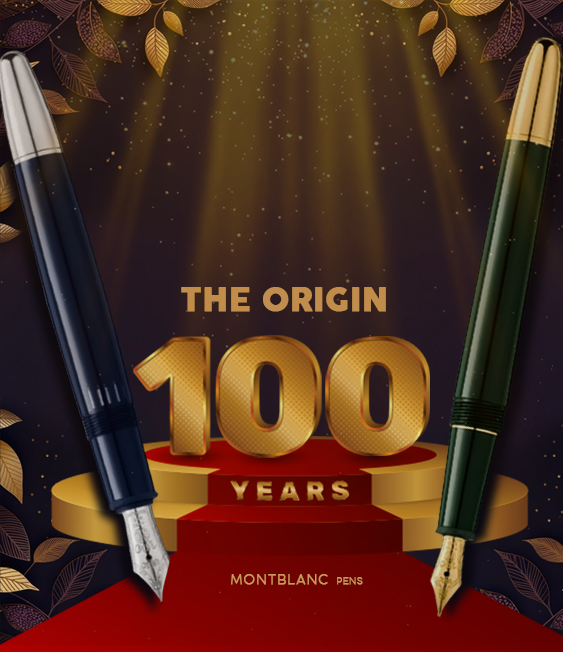
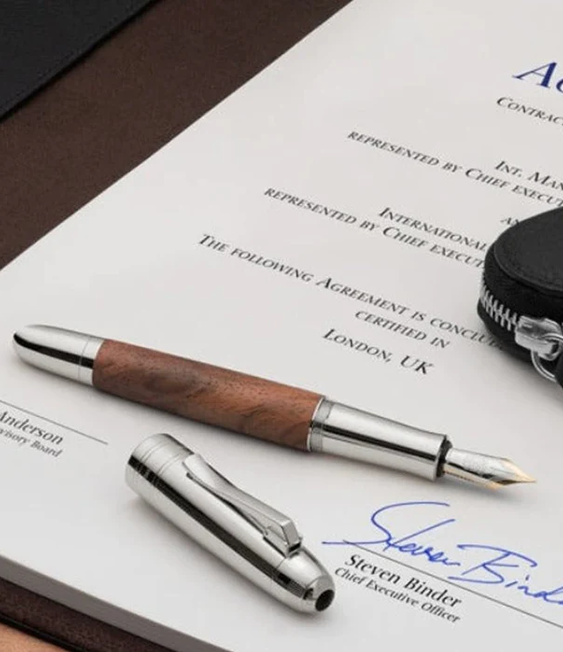
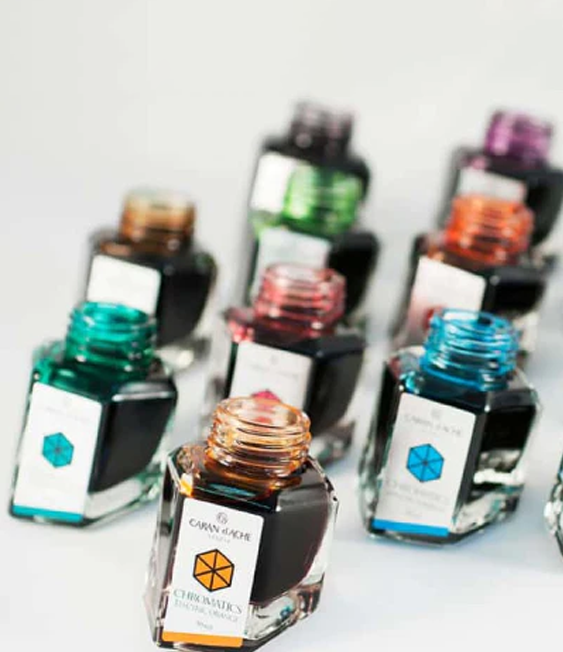
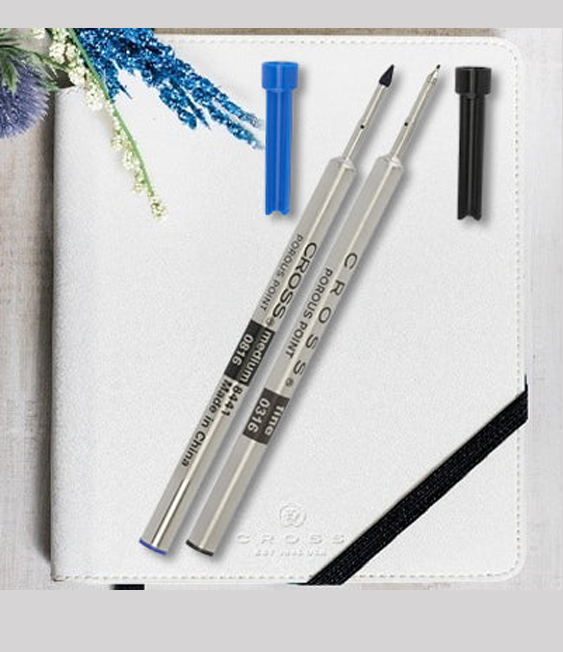

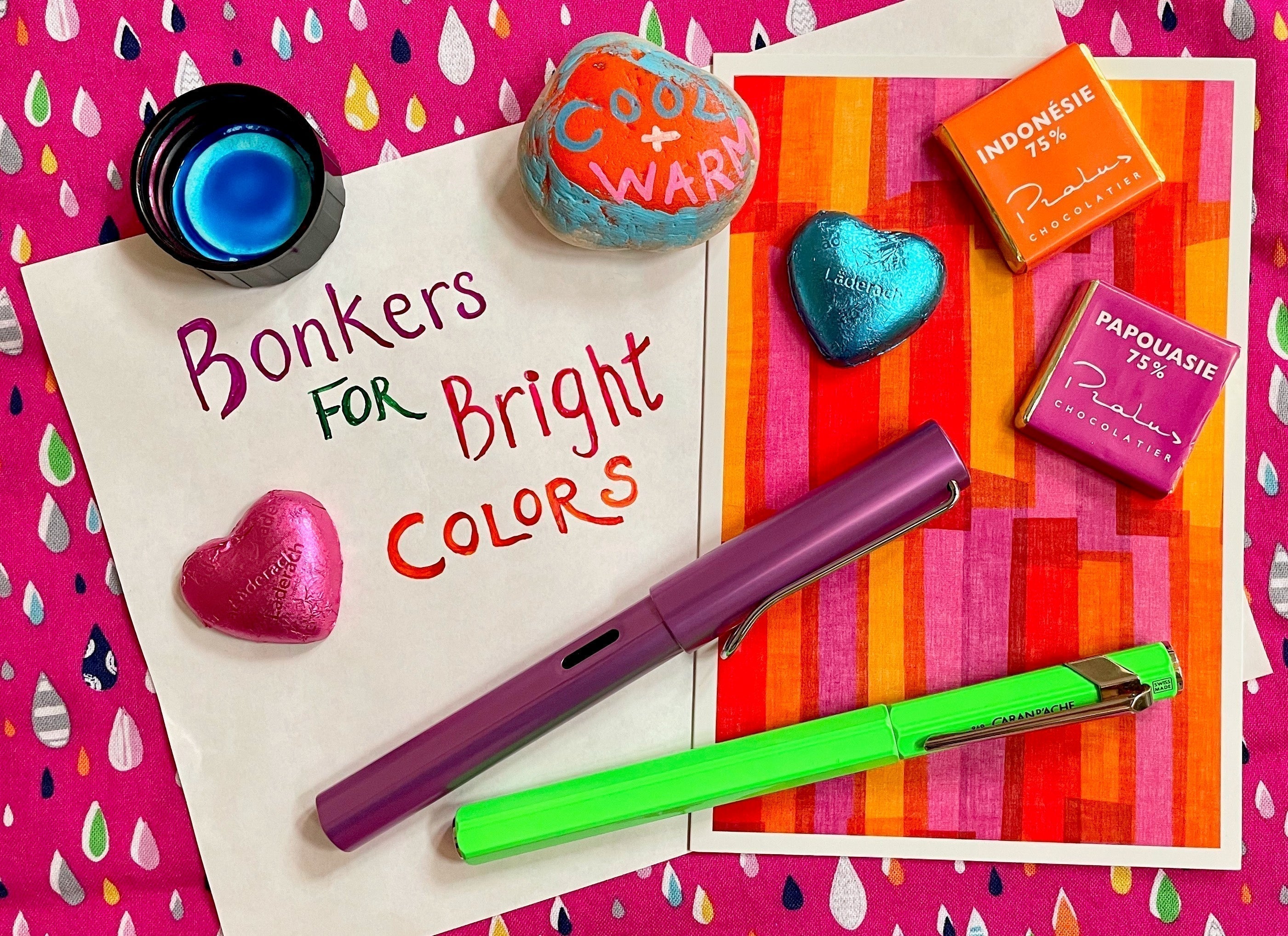
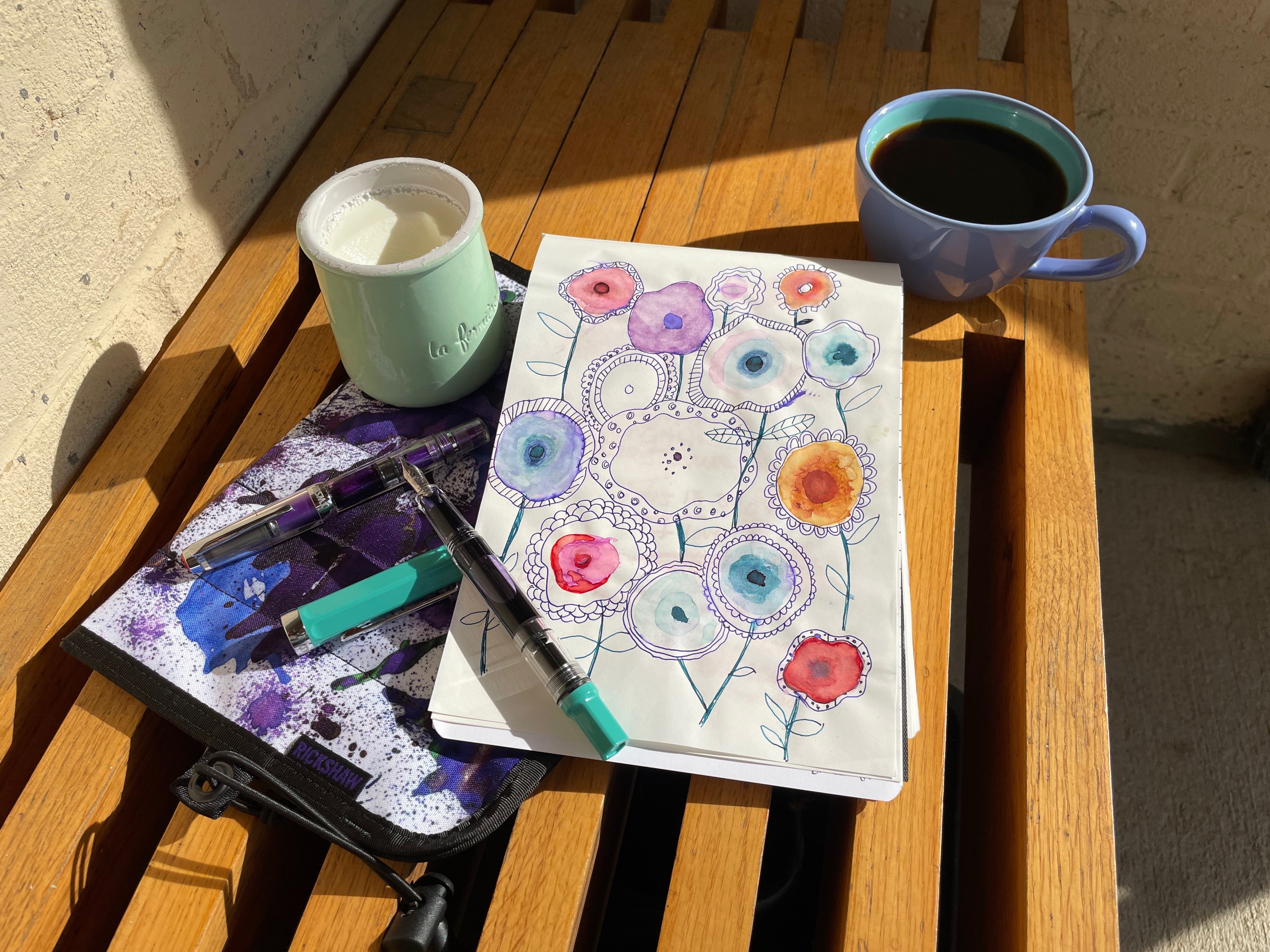

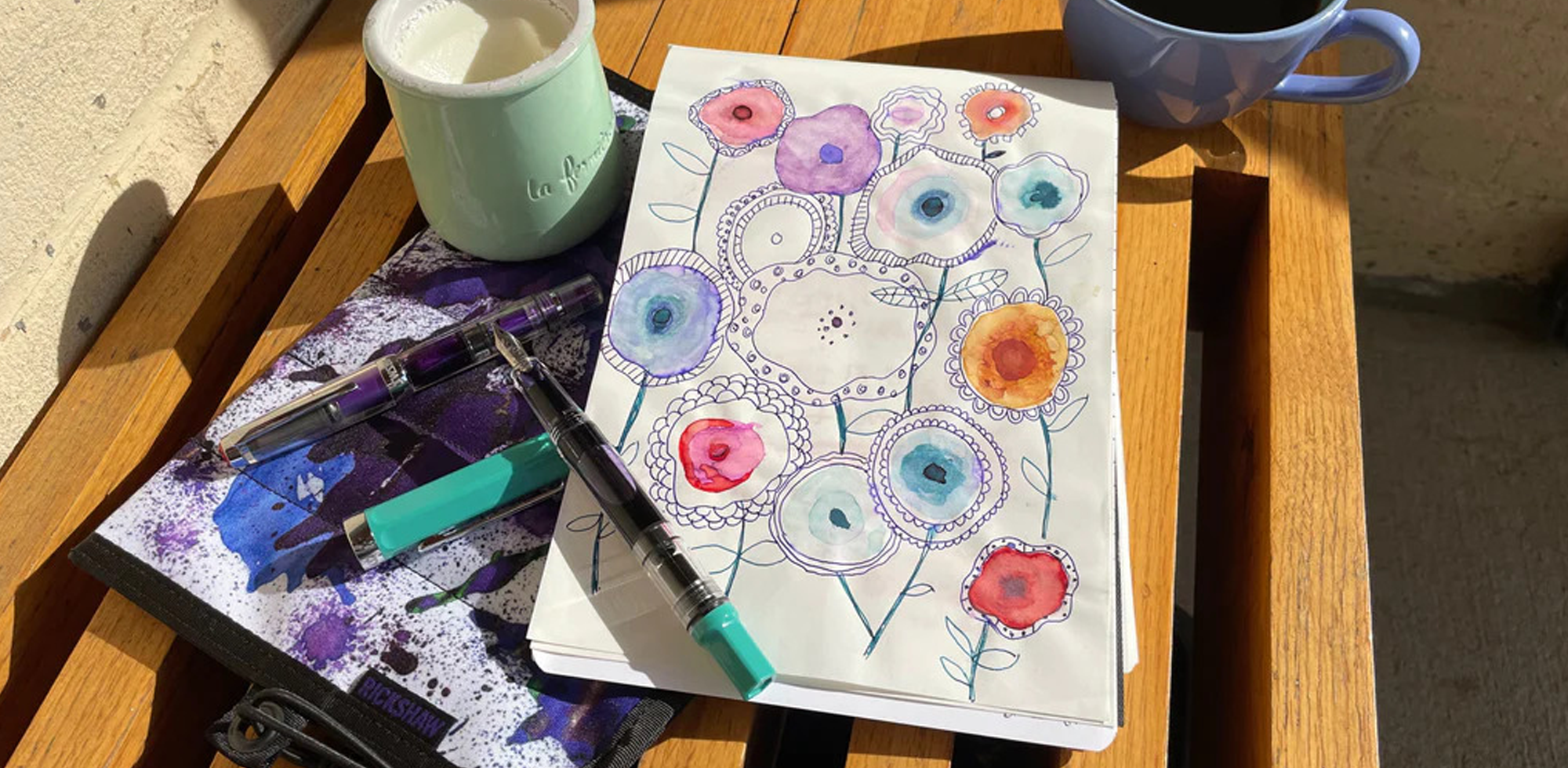
3 comments
Ruth
This was a great read! Thank you. I have a beautiful Taccia Covenant SE pen, and I won one of the exquisite Taccia urushi pens in a raffle at a recent pen show! I love Taccia and learning more about the founder’s vision. I also like the nibs on Taccia pens better than the ones on Sailors. Not sure why or how that could be, but that’s the way it seems to me!
This was a great read! Thank you. I have a beautiful Taccia Covenant SE pen, and I won one of the exquisite Taccia urushi pens in a raffle at a recent pen show! I love Taccia and learning more about the founder’s vision. I also like the nibs on Taccia pens better than the ones on Sailors. Not sure why or how that could be, but that’s the way it seems to me!
Pam Prince
Another great blog Laura!
Until now I saw no reason to pay more than $25 for a fountain pen. My Pilot Metropolitan M point writes & performs well on plain paper w/ none of the negative effects I’ve read about.
However after reading Laura’s blog I am now thinking about buying a TACCIA Spectrum pen, an upgrade I never would have considered if not for Laura’s post.
Had Laura not interviewed Shu-Jen I would have discounted the Spectrum for its plain appearance as viewed online.
Thanks to Laura’s blog readers learned that the Spectrum looks much better in person & is hand made w/ high quality materials, another reason to upgrade my pen.
Kudos to Shu-Jen for quality at an affordable price and for her marketing savvy in recognizing the need for a woman sized luxury pen.
I hop Leena realizes what an asset Laura is to her business. Her blogs are the most informative & helpful to fountain pen newcomers. Posting pictures & writing samples is a tremendous way to help online customers make choices not only in pens but in ink as well.
In closing I’d like to encourage everyone but especially women to support women’s businesses, and artistry.
Another great blog Laura!
Until now I saw no reason to pay more than $25 for a fountain pen. My Pilot Metropolitan M point writes & performs well on plain paper w/ none of the negative effects I’ve read about.
However after reading Laura’s blog I am now thinking about buying a TACCIA Spectrum pen, an upgrade I never would have considered if not for Laura’s post.
Had Laura not interviewed Shu-Jen I would have discounted the Spectrum for its plain appearance as viewed online.
Thanks to Laura’s blog readers learned that the Spectrum looks much better in person & is hand made w/ high quality materials, another reason to upgrade my pen.
Kudos to Shu-Jen for quality at an affordable price and for her marketing savvy in recognizing the need for a woman sized luxury pen.
I hop Leena realizes what an asset Laura is to her business. Her blogs are the most informative & helpful to fountain pen newcomers. Posting pictures & writing samples is a tremendous way to help online customers make choices not only in pens but in ink as well.
In closing I’d like to encourage everyone but especially women to support women’s businesses, and artistry.
LN
Thank you for this in-depth look at Taccia. I have admired their pens for some time so it’s really nice to learn more about them. Their higher-end pens are simply stunning and maybe someday if I get a windfall I might be able to buy one for myself! In the meantime it’s nice to see these gorgeous photos of them. I will also add the Spectrum to my list of pens to consider buying!
Thank you for this in-depth look at Taccia. I have admired their pens for some time so it’s really nice to learn more about them. Their higher-end pens are simply stunning and maybe someday if I get a windfall I might be able to buy one for myself! In the meantime it’s nice to see these gorgeous photos of them. I will also add the Spectrum to my list of pens to consider buying!